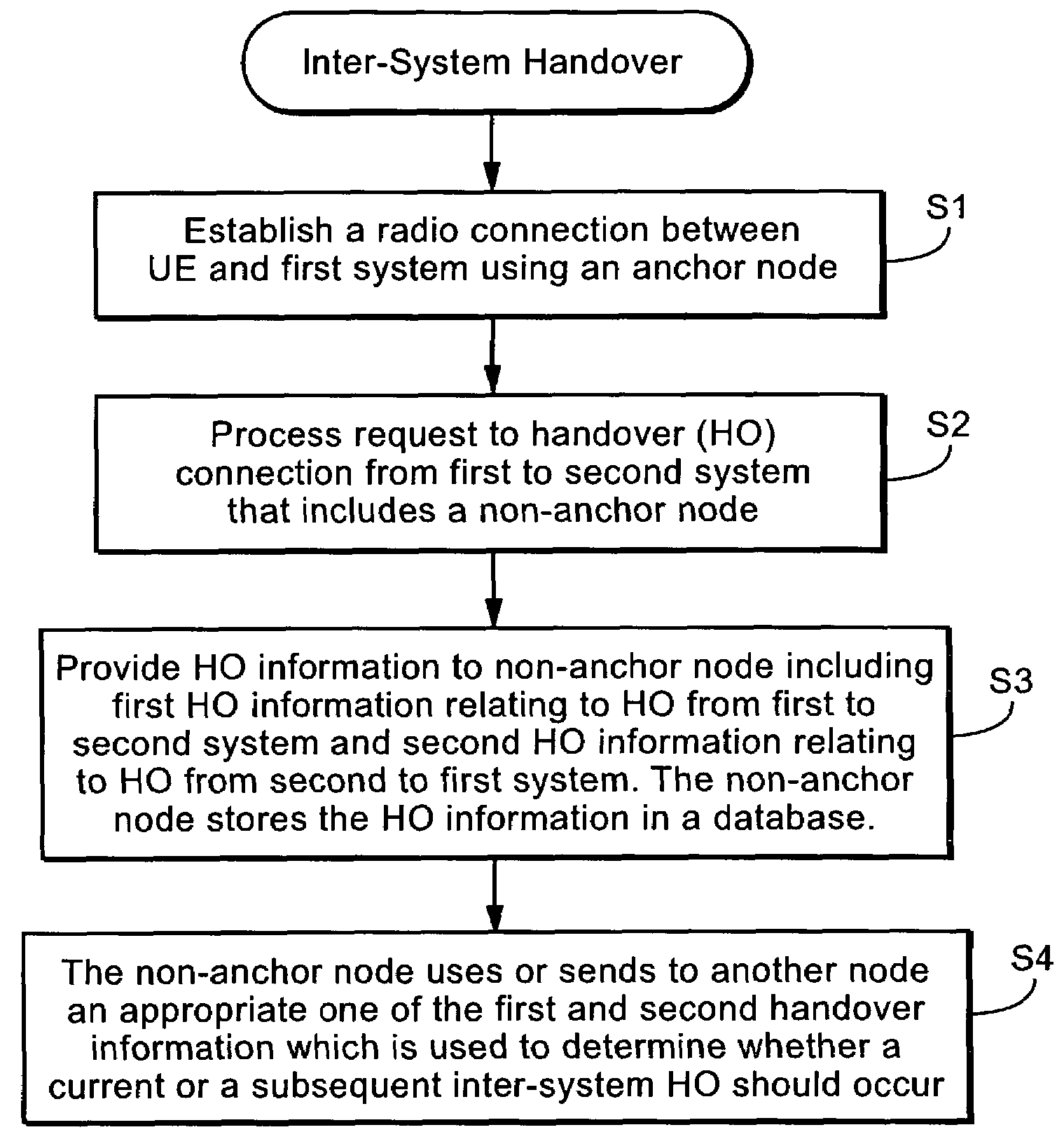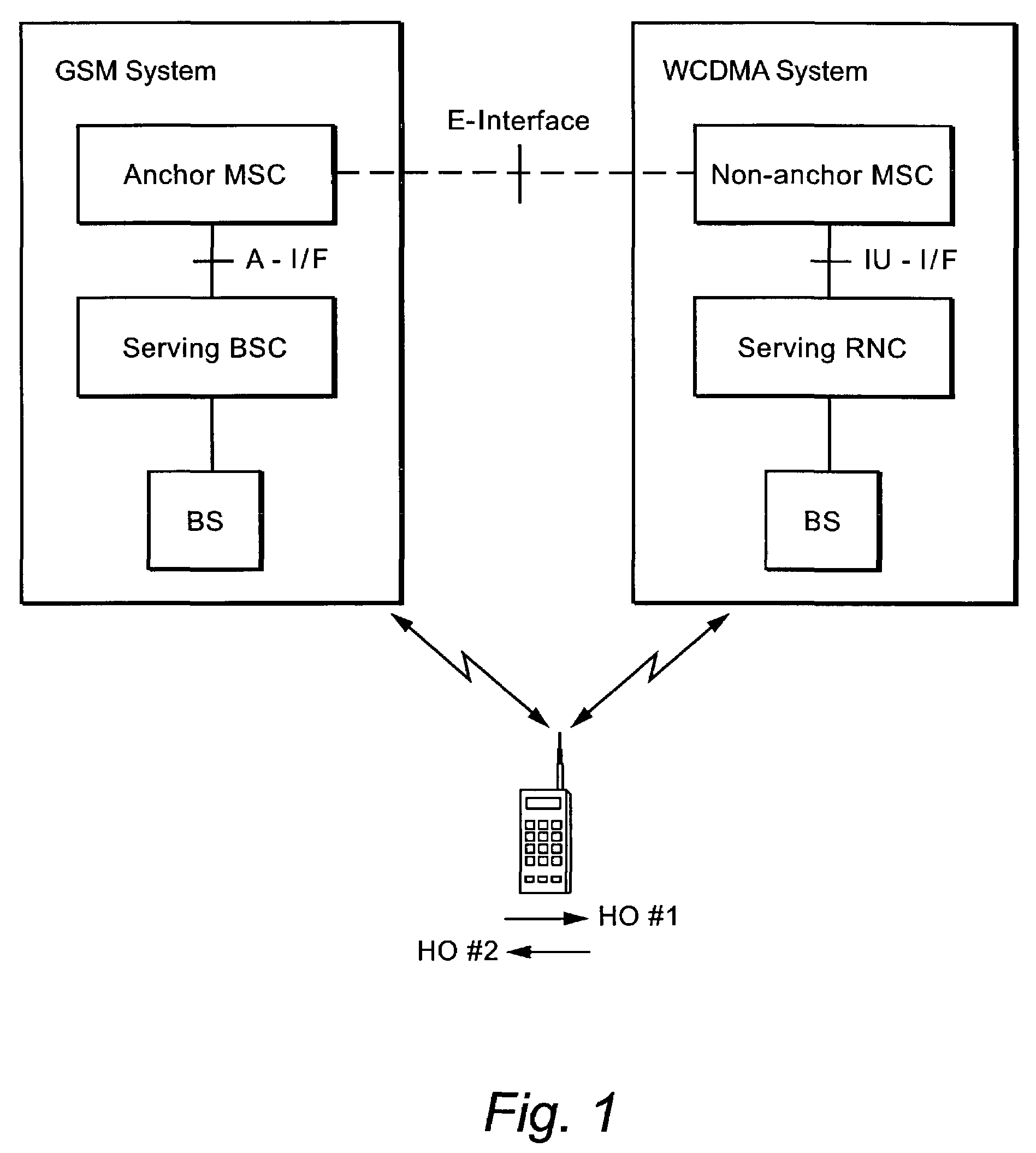Service-based inter-system handover
a service-based, inter-system technology, applied in the field of mobile radio systems, can solve the problems of insufficient general procedures to properly facilitate desirable operator control, inability to interpret the service handover information element in the gsm-related protocol format, and inability to facilitate subsequent inter-system handover requests
- Summary
- Abstract
- Description
- Claims
- Application Information
AI Technical Summary
Benefits of technology
Problems solved by technology
Method used
Image
Examples
Embodiment Construction
[0023]In the following description, for purposes of explanation and not limitation, specific details are set forth, such as particular embodiments, procedures, techniques, etc. in order to provide a thorough understanding of the present invention. However, it will be apparent to one skilled in the art that the present invention may be practiced in other embodiments that depart from these specific details. Therefore, even though example embodiments are described below with respect to second generation systems such as GSM and third generation systems such as UTRAN / UMTS, the fundamental aspects of this invention are generically applicable to any kind of inter-system handovers. Nor is the present invention limited to inter-system handovers between two mobile radio communication systems. To the contrary, the invention may be employed in any inter-system handover between any two or more mobile radio communication systems.
[0024]In some instances, detailed descriptions of well-known methods...
PUM
 Login to View More
Login to View More Abstract
Description
Claims
Application Information
 Login to View More
Login to View More - R&D
- Intellectual Property
- Life Sciences
- Materials
- Tech Scout
- Unparalleled Data Quality
- Higher Quality Content
- 60% Fewer Hallucinations
Browse by: Latest US Patents, China's latest patents, Technical Efficacy Thesaurus, Application Domain, Technology Topic, Popular Technical Reports.
© 2025 PatSnap. All rights reserved.Legal|Privacy policy|Modern Slavery Act Transparency Statement|Sitemap|About US| Contact US: help@patsnap.com



